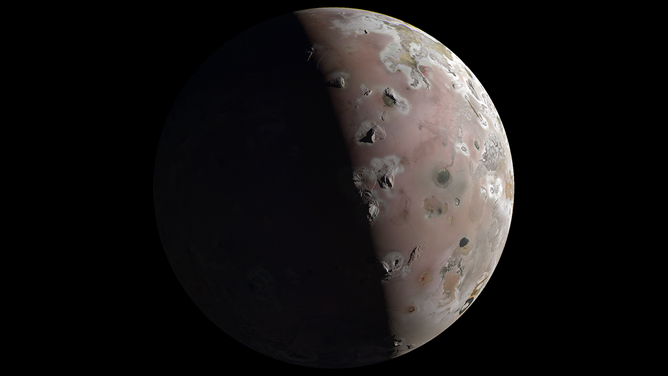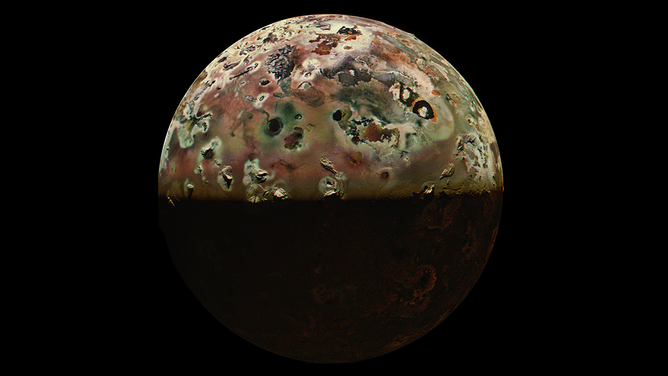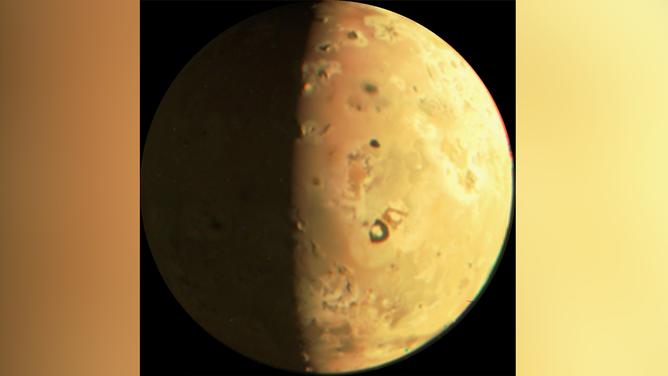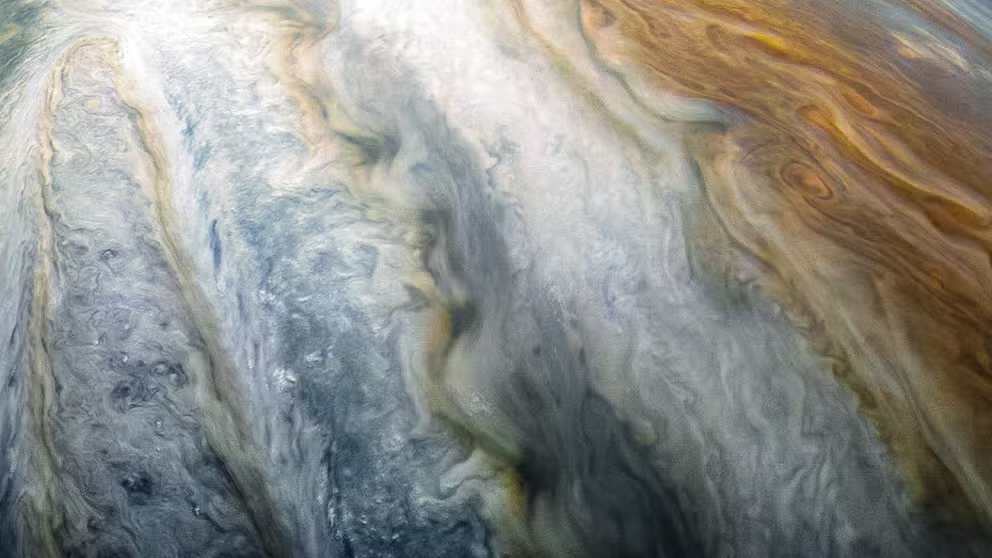NASA spacecraft captures stunning photos of volcanoes on Jupiter's moon Io
The Juno spacecraft's recent thrilling journey was one of two scheduled flybys that promised to offer a unique opportunity to witness the marvels of Jupiter's volcanically active moon, Io. According to NASA, the flyby was the closest that any spacecraft has made to Io in over 20 years.
FILE – See stunning photos of Jupiter taken by NASA's Juno orbiter
On July 4, 2016, the Juno spacecraft entered orbit around Jupiter. To celebrate its 50th orbit of the gas giant, NASA released 50 images taken by the spacecraft.
NASA is taking space enthusiasts on an unprecedented expedition to a volcanic world situated amid the vast expanse of our universe.
The Juno spacecraft's recent thrilling journey was one of two scheduled flybys that promised to offer a unique opportunity to witness the marvels of Jupiter's volcanically active moon, Io. According to NASA, the flyby was the closest that any spacecraft has made to Io in over 20 years.
The Juno mission launched on August 5, 2011, and entered into Jupiter's orbit on July 4, 2016. It is NASA's farthest planetary orbiter.
On Saturday, the orbiter came within roughly 930 miles from the surface of the most volcanic world in our solar system, NASA said. The pass is expected to allow Juno instruments to generate a "firehose of data."
"By combining data from this flyby with our previous observations, the Juno science team is studying how Io’s volcanoes vary," said Juno’s principal investigator, Scott Bolton of the Southwest Research Institute in San Antonio, Texas. "We are looking for how often they erupt, how bright and hot they are, how the shape of the lava flow changes, and how Io’s activity is connected to the flow of charged particles in Jupiter’s magnetosphere."
SEE THE BOLT OF LIGHTNING ON JUPITER THAT CAUSED AN EERIE GREEN GLOW

Image of Io acquired by JunoCam during Perijove 57.
(NASA / SWRI / MSSS / Jason Perry © CC NC SA)
A second close-fly of Io is scheduled for Feb. 3.
The spacecraft, which runs on solar power, has been exploring Jupiter's origin for three years, NASA said. During its mission, it has been studying Io's volcanic activity from distances of over 62,100 miles. The spacecraft has also managed to capture the first-ever views of the moon's north and south poles. The mission has featured additional flybys near Jupiter's icy moons, Ganymede and Europa.
"With our pair of close flybys in December and February, Juno will investigate the source of Io’s massive volcanic activity, whether a magma ocean exists underneath its crust, and the importance of tidal forces from Jupiter, which are relentlessly squeezing this tortured moon," Bolton said.
5 NASA IMAGES THAT COMMEMORATE JUNO'S 50TH ORBIT AROUND JUPITER

NASA’s Juno spacecraft on Saturday made the closest flyby of Jupiter’s moon Io that any spacecraft has made in over 20 years.
(NASA/JPL-Caltech/SwRI/MSSS/Thomas Thomopoulos © CC BY)
The orbiter has performed 56 flybys of Jupiter, according to NASA, and documented close encounters with three of the gas giant’s four largest moons. It was originally only designed to operate for up to eight flybys due to the planet's punishing radiation environments.
The mission is NASA's first to have a dedicated camera for citizen scientists. Anyone can upload images of Jupiter and help the mission scientists decide what JunoCam will photograph.
"The cumulative effects of all that radiation has begun to show on JunoCam over the last few orbits," said Ed Hirst, project manager of Juno at NASA’s Jet Propulsion Laboratory in Southern California. "Pictures from the last flyby show a reduction in the imager’s dynamic range and the appearance of ‘striping’ noise. Our engineering team has been working on solutions to alleviate the radiation damage and to keep the imager going."
JUPITER'S FORECAST: SWIRLING STORMS AS BIG AS EARTH THAT LAST FOR YEARS

NASA’s Juno spacecraft on Saturday made the closest flyby of Jupiter’s moon Io that any spacecraft has made in over 20 years.
(NASA / SwRI / MSSS)
The spacecraft will do some experiments starting in April to study the air around Jupiter. This will help scientists learn about the planet's shape and what it's made of inside.
